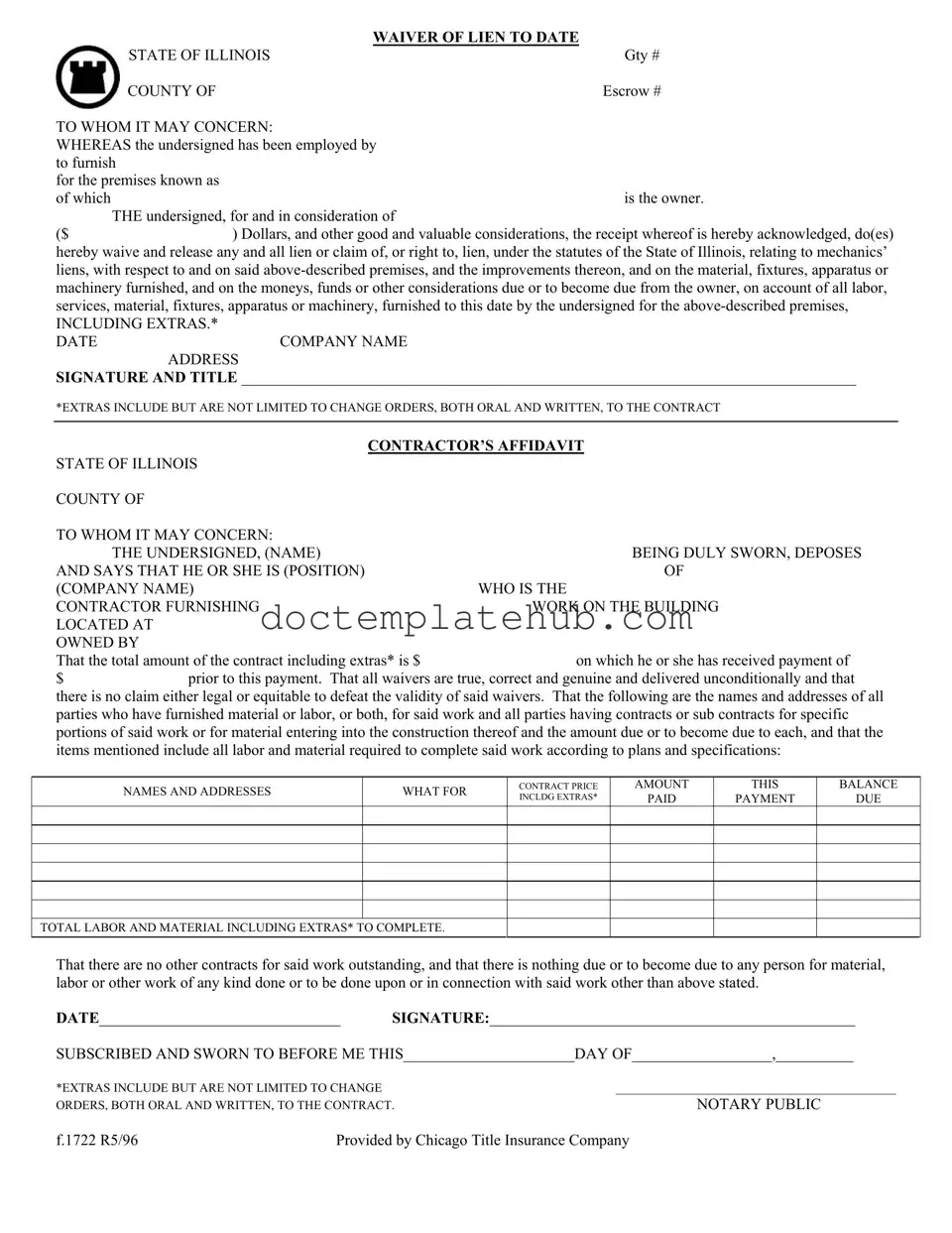What is the purpose of the Chicago Title Waiver Format form?
The Chicago Title Waiver Format form serves as a legal document that allows contractors and subcontractors to waive their right to file a mechanics' lien against a property. By signing this form, the undersigned acknowledges receipt of payment for services rendered and releases any claims to a lien on the property in question. This is essential for ensuring that property owners can move forward with their projects without the risk of future claims from unpaid contractors.
Who should use the Chicago Title Waiver Format form?
This form is primarily intended for contractors, subcontractors, and suppliers who have provided labor or materials for a construction project in Illinois. It is beneficial for those who want to confirm that they have been paid for their work and to assure property owners that no further claims will be made regarding unpaid services. By using this waiver, all parties involved can maintain clarity and transparency throughout the construction process.
What information is required to complete the form?
To properly fill out the Chicago Title Waiver Format form, several key pieces of information are necessary. This includes the name of the company providing the waiver, the date of the waiver, the property address, the total contract amount, and the amount received prior to the waiver. Additionally, details about any extras, such as change orders, must be included. Finally, the signatures of the authorized individuals must be obtained to validate the document.
What are 'extras' in the context of this waiver?
'Extras' refer to any additional work or materials that were not originally included in the contract but are necessary for the completion of the project. This can include change orders, which may be either oral or written agreements that modify the scope of work. It is crucial to account for these extras in the waiver to ensure that all parties are aware of any additional costs or changes to the original contract.
What happens if the waiver is not signed?
If the Chicago Title Waiver Format form is not signed, contractors and subcontractors retain their right to file a mechanics' lien against the property. This means that if payment is not received, they may pursue legal action to secure their payment through a lien. Therefore, it is in the best interest of both the contractor and the property owner to complete and sign this waiver to avoid potential disputes or claims in the future.
Is notarization required for the waiver?
Yes, notarization is a requirement for the Chicago Title Waiver Format form. The signature of the individual completing the waiver must be notarized to ensure its authenticity and to provide an additional layer of protection for all parties involved. This step helps verify that the person signing the document is indeed authorized to do so and that the waiver is legally binding.
Can the waiver be revoked once signed?
Once the Chicago Title Waiver Format form is signed and notarized, it typically cannot be revoked. The waiver represents a final acknowledgment of payment and a release of lien rights. Therefore, it is essential for contractors and subcontractors to ensure they have received full payment before signing. If there are concerns about payment, it may be wise to seek legal counsel before proceeding with the waiver.
How does this waiver protect property owners?
The Chicago Title Waiver Format form provides significant protection for property owners by ensuring that they are not liable for any unpaid claims from contractors or subcontractors. By obtaining this waiver, property owners can confidently proceed with their projects, knowing that all parties involved have acknowledged receipt of payment and waived their rights to file liens. This promotes a smoother construction process and helps prevent potential legal disputes.
